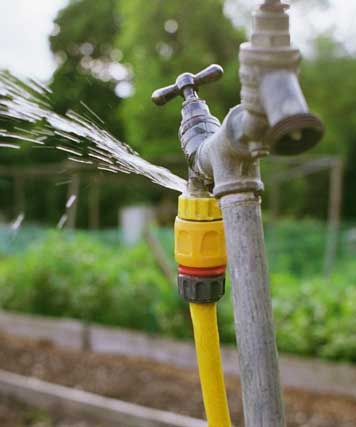6 Ways to Find Concealed Water Leakages in Your Home
6 Ways to Find Concealed Water Leakages in Your Home
Blog Article
The content down below on the subject of Locating water leaks is amazingly enjoyable. You should see for yourself.

Early detection of dripping water lines can minimize a possible catastrophe. Some little water leaks may not be visible.
1. Take A Look At the Water Meter
Every home has a water meter. Examining it is a proven way that aids you uncover leakages. For beginners, switch off all the water resources. Ensure no one will certainly purge, make use of the faucet, shower, run the washing maker or dish washer. From there, go to the meter and also watch if it will certainly change. Since no person is using it, there must be no activities. That shows a fast-moving leak if it moves. If you identify no modifications, wait an hour or 2 as well as inspect back once more. This indicates you might have a slow-moving leak that could also be underground.
2. Inspect Water Intake
If you identify sudden adjustments, regardless of your usage being the same, it implies that you have leakages in your plumbing system. An unexpected spike in your costs indicates a fast-moving leak.
At the same time, a constant boost monthly, despite having the same routines, shows you have a sluggish leakage that's additionally slowly intensifying. Call a plumber to completely check your building, particularly if you feel a warm location on your floor with piping below.
3. Do a Food Coloring Test
When it comes to water consumption, 30% comes from bathrooms. If the color in some way infiltrates your dish throughout that time without flushing, there's a leak between the storage tank and bowl.
4. Asses Outside Lines
Do not neglect to inspect your outside water lines also. Must water leak out of the connection, you have a loosened rubber gasket. One little leakage can throw away lots of water and increase your water costs.
5. Evaluate as well as Examine the Scenario
Property owners must make it a habit to inspect under the sink counters as well as also inside cabinets for any kind of bad odor or mold growth. These 2 warnings show a leak so timely attention is called for. Doing regular assessments, even bi-annually, can save you from a significant problem.
If you recognize your house is currently old, keep a careful eye on your heating units, hose pipes, pipelines etc. Check for discolorations and deteriorating as the majority of pipelines and also home appliances have a life span. They will also naturally weaken due to tear and wear. If you suspect leaking water lines in your plumbing system, don't wait on it to rise. Call a professional plumber right away so you do not wind up with a horrible mess in your home.
Early detection of leaking water lines can reduce a prospective catastrophe. Some little water leakages may not be noticeable. Checking it is a guaranteed way that aids you discover leaks. One little leak can waste heaps of water and spike your water bill.
If you presume dripping water lines in your plumbing system, do not wait for it to rise.
WARNING SIGNS OF WATER LEAKAGE BEHIND THE WALL
PERSISTENT MUSTY ODORS
As water slowly drips from a leaky pipe inside the wall, flooring and sheetrock stay damp and develop an odor similar to wet cardboard. It generates a musty smell that can help you find hidden leaks.
MOLD IN UNUSUAL AREAS
Mold usually grows in wet areas like kitchens, baths and laundry rooms. If you spot the stuff on walls or baseboards in other rooms of the house, it’s a good indicator of undetected water leaks.
STAINS THAT GROW
When mold thrives around a leaky pipe, it sometimes takes hold on the inside surface of the affected wall. A growing stain on otherwise clean sheetrock is often your sign of a hidden plumbing problem.
PEELING OR BUBBLING WALLPAPER / PAINT
This clue is easy to miss in rooms that don’t get much use. When you see wallpaper separating along seams or paint bubbling or flaking off the wall, blame sheetrock that stays wet because of an undetected leak.
BUCKLED CEILINGS AND STAINED FLOORS
If ceilings or floors in bathrooms, kitchens or laundry areas develop structural problems, don’t rule out constant damp inside the walls. Wet sheetrock can affect adjacent framing, flooring and ceilings.
https://www.servicemasterbyzaba.com/blog/how-to-detect-water-leakage-in-walls/

Do you really like reading about Locating water leaks? Write a remark directly below. We will be pleased to know your opinion about this blog entry. We are looking forward to see you back again soon. Sharing is caring. Who knows, you could be helping someone out. Thanks a lot for your time. Kindly visit our blog back soon.
Report this page